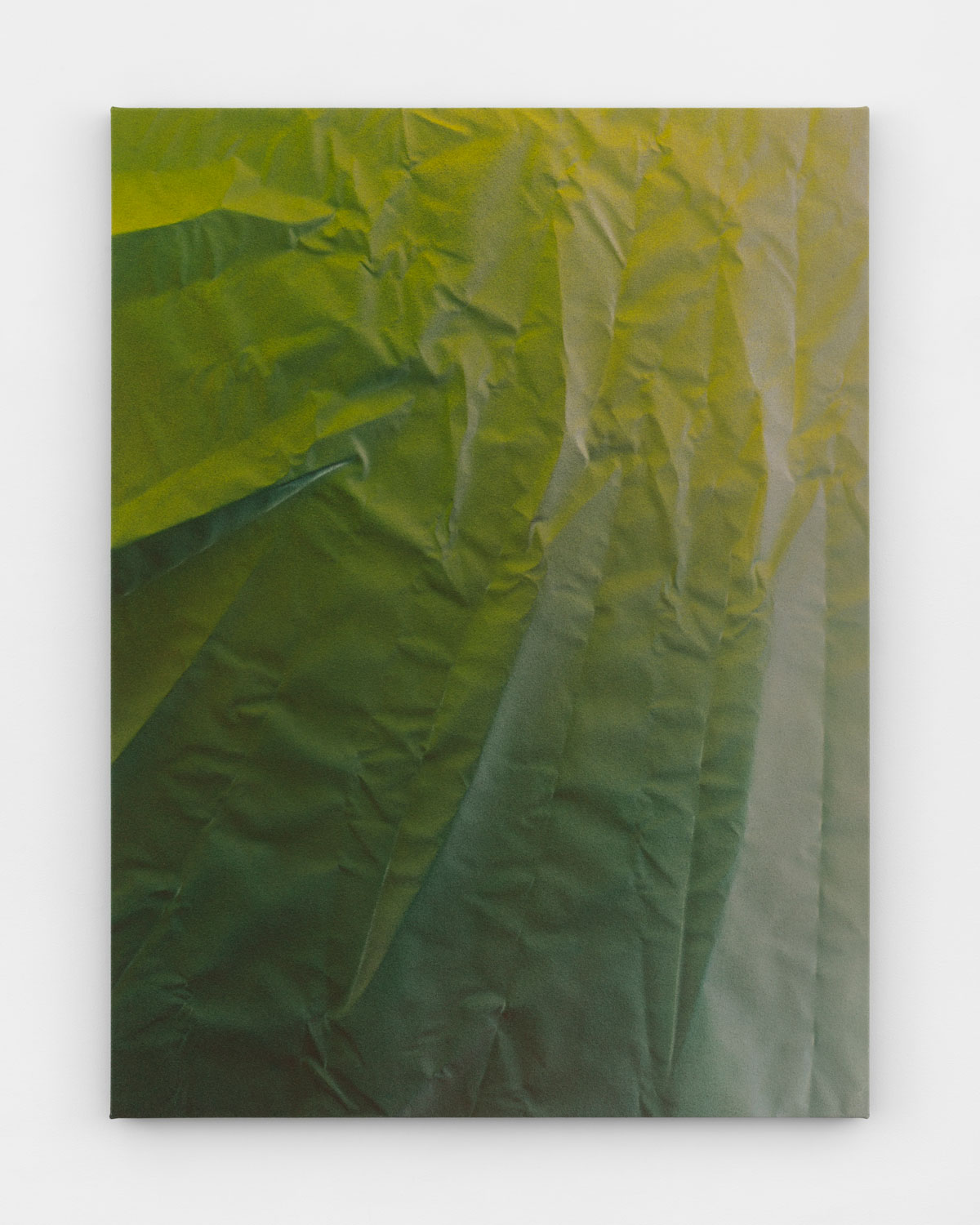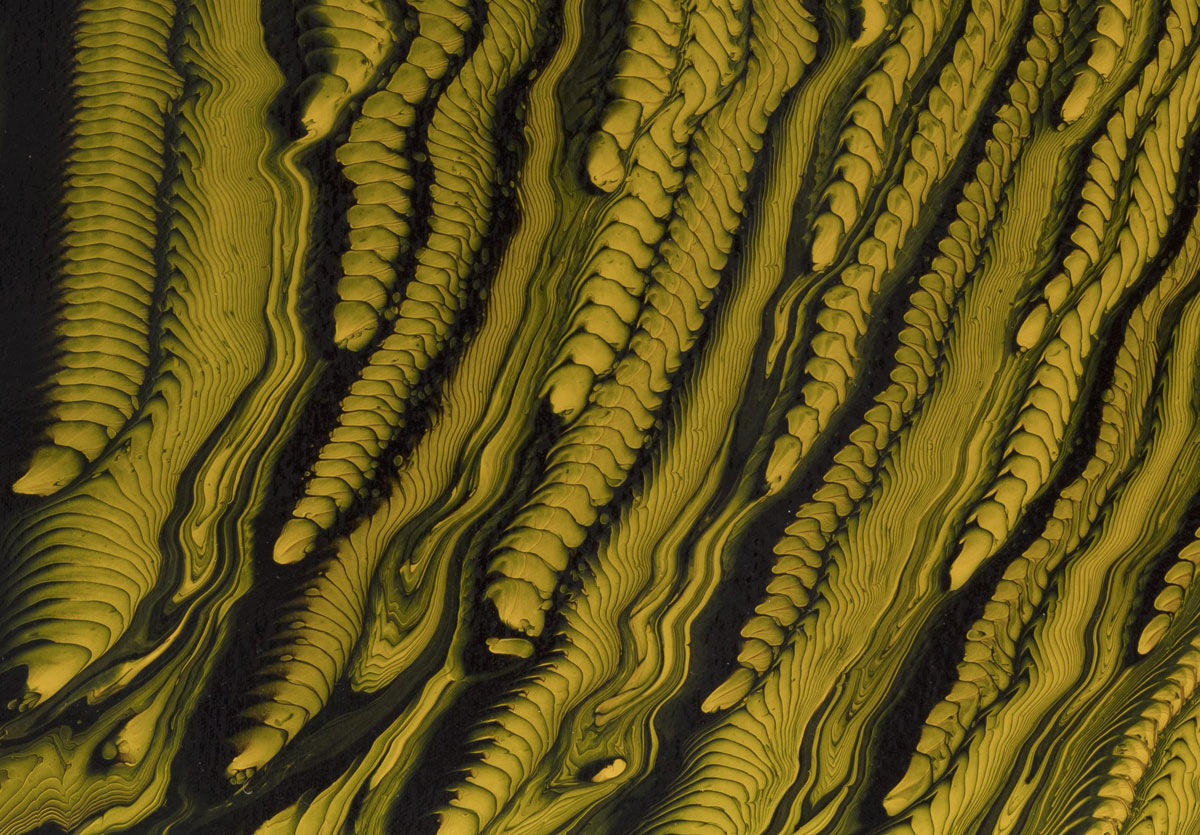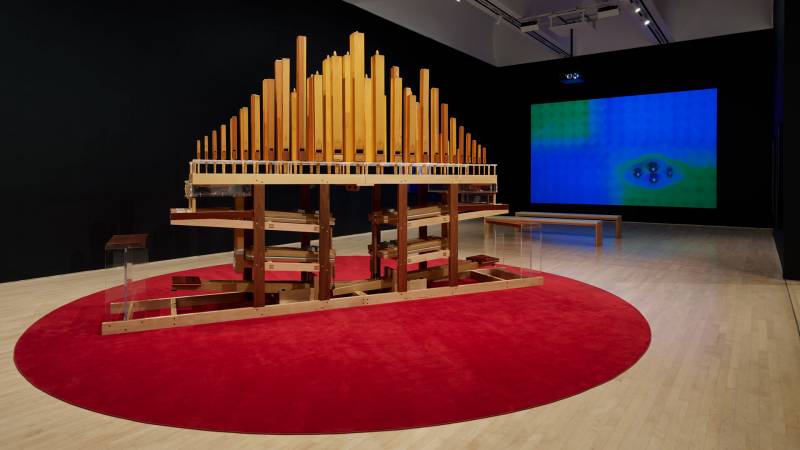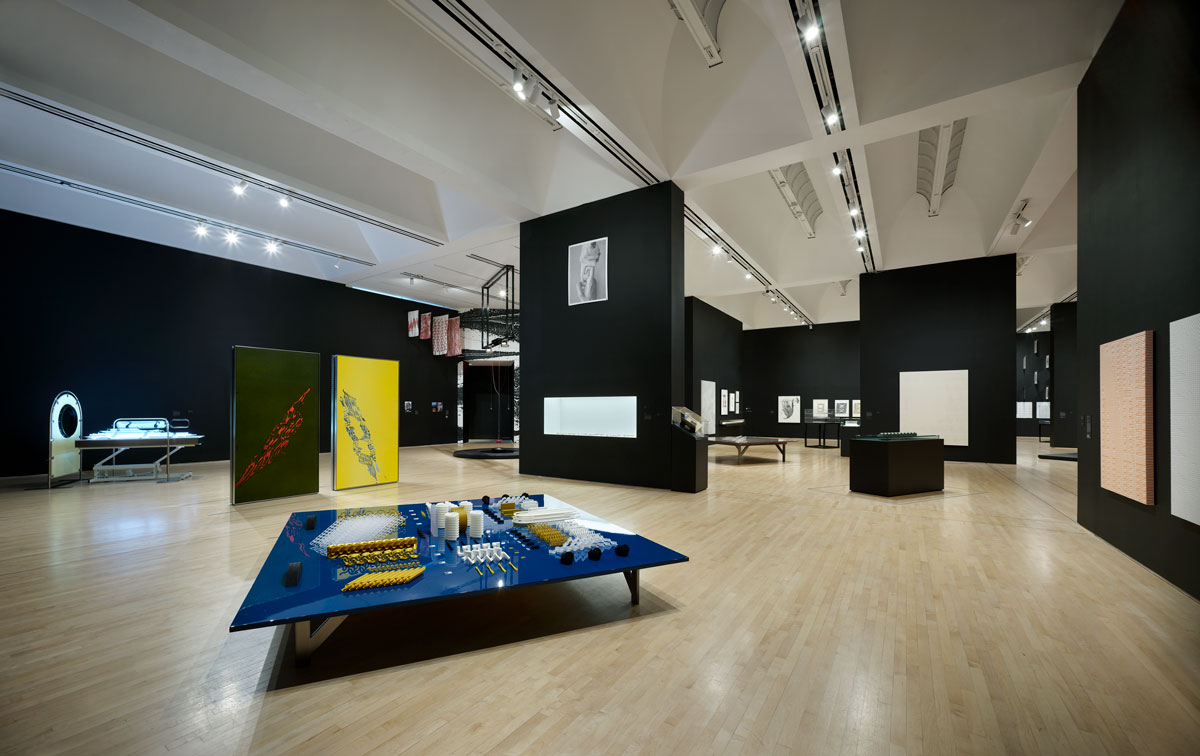S v Z is one of the many shows that got waylaid by the pandemic, part of a backlog of promising exhibitions finally washing up on institutional shores. As a result, Tauba Auerbach’s first museum survey straddles the San Francisco Museum of Modern Art’s long closure in telling ways. Its catalog—luxuriously printed and meticulously designed, more artist book than exhibition publication—came out in 2020, long before SFMOMA announced it would “reduce the number and scale of publications.” The show’s newest work, and the first piece viewers see, speaks directly to the pandemic that allowed for its inclusion: a painting of the Earth made wildly unfamiliar by custom mapping software.
S v Z is a product of both the before- and now-times, but it also serves as an example of what SFMOMA could yet become: an institution that gives contemporary artists the space and support to manifest a world all their own.

Born in San Francisco and currently living in New York, Auerbach might be most familiar to viewers for their Fold paintings—canvases creased and sprayed with acrylic paint before being stretched tight, yielding an opalescent trompe l’oeil of former wrinkles. These paintings are mesmerizing; the desire to run a hand over their now-smooth surfaces is difficult to contain. But S v Z, organized by SFMOMA curators Joseph Becker and Jenny Gheith, demonstrates this was just one experiment in the artist’s wide-ranging and continually inventive practice.
Contained within the survey are all manner of artistic approaches: drawings, paintings, kinetic sculpture, glasswork, video, artist books, multiples, wearable “marginalia,” printmaking, flags—even a version of a mural once applied across the surfaces of a New York City fireboat. Auerbach routinely examines that which is often taken for granted (e.g. the “components” of the alphabet), tapping into mathematical and scientific theories and mastering new modes of making with each interconnected project.
Even when the concepts underpinning a piece are beyond the grasp of the casual non-STEM-educated observer, Auerbach translates their research into tangible, sublimely beautiful forms. The New Ambidextrous Universe III, a single sheet of plywood cut into wavy strips and rearranged in reverse order, approximates what the object would look like if it rotated through four-dimensional space and “returned as its mirror image.” It’s a mind-boggling premise, but the eye takes in what the brain cannot. The effect is something akin to moving an image as a scanner passes over it—a blip in the space/time continuum.

If the mechanisms or materials don’t yet exist to bring an idea to fruition, Auerbach creates custom tools and formulations. The painting series Extended Objects—glossy surfaces of wobbly color—relies on a custom-formulated additive that allows acrylic paint to flow through “unique pouring tools.” In 7S, 7Z, 1S, 2Z, a custom mix of soap creates a bubble-like film between expanding and contracting interwoven steel cables. And in the exhibition’s most tucked-away corner, 26 original type specimen posters from Auerbach’s imprint, Diagonal Press, hang like heraldic flags on one wall.




